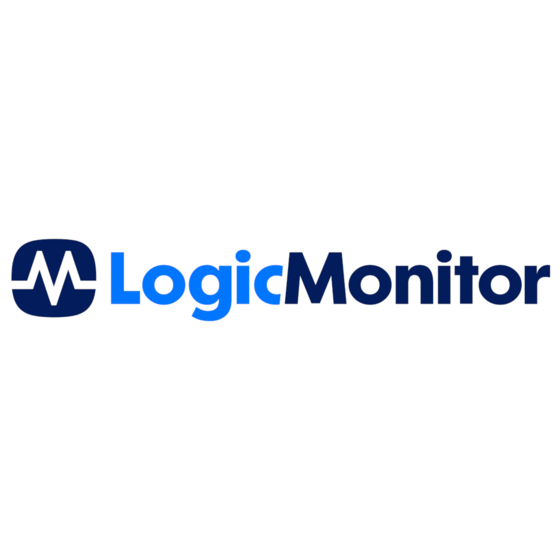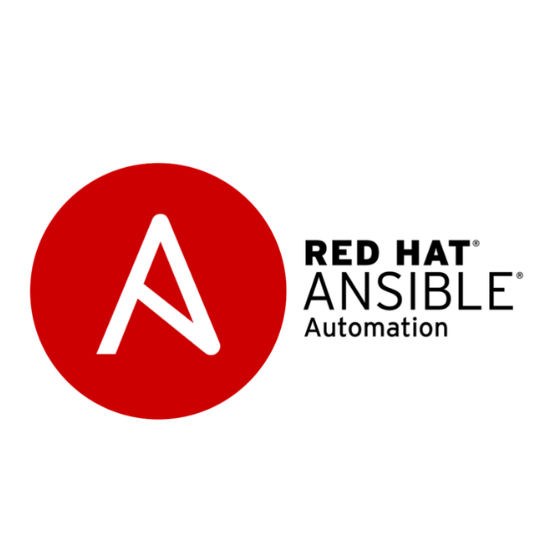10 Best Infrastructure Automation Tools Shortlist
Here's my pick of the 10 best software from the 27 tools reviewed.
Our one-on-one guidance will help you find the perfect fit.
Infrastructure provisioning tools help you automate the setup of environments like Kubernetes clusters, virtual machines, and full-scale cloud infrastructure without doing it all by hand.
Many teams start looking for these tools when manual provisioning becomes too slow, config management starts getting messy, or deploying across environments feels inconsistent and fragile. Without a reliable provisioning system, it’s easy to lose time chasing down errors or redoing work.
I’ve helped development and operations teams set up provisioning workflows that support fast, repeatable deployments across hybrid environments. This guide is based on that work and focuses on tools that actually reduce complexity instead of adding to it.
What Is An Infrastructure Automation Tool?
Infrastructure automation tools are software that let teams set up, manage, and change servers, networks, and other systems through code instead of doing everything manually. They're used by DevOps engineers, sysadmins, and cloud architects who want to make deployments faster and more reliable. Features like script-based provisioning, state management, and integration with CI/CD systems help with reducing setup time, avoiding config errors, and keeping environments consistent. These tools make it easier to manage infrastructure without repeating the same manual tasks.
Best Infrastructure Automation Tools Summary
| Tool | Best For | Trial Info | Price | ||
|---|---|---|---|---|---|
| 1 | Best for network configuration automation | Free demo available | Pricing upon request | Website | |
| 2 | Best for version control and collaborative software development | 30-day free trial available | From $4/user/month | Website | |
| 3 | Best for SaaS-based IT infrastructure monitoring | Free trial available | From $3/resource/month | Website | |
| 4 | Best for provisioning and managing Azure resources | Free plan available | Pricing upon request | Website | |
| 5 | Best for creating and managing AWS resource stacks | Free plan available | Pricing upon request | Website | |
| 6 | Best for managing multi-cloud deployments with no-code operations | Not available | Pricing upon request | Website | |
| 7 | Best for integrated CI/CD, security, and DevOps practices | 30-day free trial + Free demo | From $19/user/month | Website | |
| 8 | Best for configuration management and application deployment | Free trial + free demo available | From $137/user/month (billed annually) | Website | |
| 9 | Best for Linux server operations and compliance | Not available | From $10/user/month | Website | |
| 10 | Best for open-source IT automation | Not available | Pricing upon request | Website |
-

Docker
Visit WebsiteThis is an aggregated rating for this tool including ratings from Crozdesk users and ratings from other sites.4.6 -

Pulumi
Visit WebsiteThis is an aggregated rating for this tool including ratings from Crozdesk users and ratings from other sites.4.8 -

GitHub Actions
Visit Website
Best Infrastructure Automation Tools Reviews
ManageEngine OpManager Plus is an integrated IT operations management solution designed to monitor and manage your organization's entire IT infrastructure. It combines network performance monitoring, server and application management, and more into a single platform.
Why I Picked ManageEngine OpManager Plus:
I picked OpManager Plus because of its built-in network configuration management, which helps you automate backups, monitor changes in real time, and stay compliant with policies. It also offers automated workflows that let you handle routine tasks and first-level troubleshooting using a drag-and-drop interface.
Standout features and integrations:
Other features include adaptive thresholds, which use machine learning to set ideal threshold values for various metrics, eliminating the need for manual adjustments. Additionally, the root cause analysis tool allows you to compare data from multiple monitors in one window, helping you quickly identify and address the underlying causes of issues. Some integrations include Active Directory, Microsoft 365, Exchange management, OpManager, Site24x7, NetFlow Analyzer, Log360, ADAudit Plus, Endpoint Central, Patch Manager Plus, AssetExplorer, and ServiceDesk Plus.
Pros and cons
Pros:
- Provides in-depth monitoring of various network devices, servers, and applications
- Ability to build custom views with widgets and visualizations
- Offers detailed performance history and trends over time for root cause analysis
Cons:
- Setting up configurations can be complex
- Can generate too many alerts, leading to alert fatigue
GitHub
Best for version control and collaborative software development
GitHub is a platform that combines the power of distributed version control and source code management (SCM) functionality of Git with its unique features. It provides a shared space for developers to collaborate, review, and manage code, making it especially suitable for version control and collaborative software development.
Why I Picked GitHub:
I chose GitHub for this list primarily because of its position as a standard in the industry for source code management. Its widespread adoption within the developer community gives it an edge, and its rich features make it ideal for version control and collaborative software development.
Standout features and integrations:
GitHub provides features in code review, project management, integrations, and team management. Pull Requests, Forks, and Actions are among its standout features that streamline the collaborative coding process. It integrates well with popular tools such as Slack, Jira, Vagrant, and many continuous integration/continuous delivery (CI/CD) systems.
Pros and cons
Pros:
- A wide array of integrations with other development tools
- Excellent collaborative features
- Comprehensive tools for version control
Cons:
- Large projects might experience performance issues.
- Certain advanced features require payment.
- The interface might be complex for beginners.
LogicMonitor is a SaaS-based platform designed to automate IT infrastructure monitoring. The tool aids in visualizing and alerting about meaningful insights from infrastructure data across networks, servers, and cloud services. Given its robust capabilities and cloud-based nature, it excels at SaaS-based IT infrastructure monitoring.
Why I Picked LogicMonitor:
I picked LogicMonitor due to its robust, automated monitoring tool features that provide a broad spectrum of IT infrastructure visibility. The cloud-based platform, combined with its scalability, differentiates it from others. It fits the bill for SaaS-based IT infrastructure monitoring because it successfully consolidates diverse monitoring tasks under one roof in a user-friendly manner.
Standout features and integrations:
LogicMonitor's standout features include comprehensive IT infrastructure coverage, automated device discovery, and cloud monitoring. The tool can seamlessly integrate with various applications, like ServiceNow, Slack, and Zendesk, making collaboration and incident management more effective.
Pros and cons
Pros:
- Cloud-based and highly scalable
- Seamless integrations with numerous applications
- Broad coverage of IT infrastructure
Cons:
- Complex setup for some specific monitoring tasks
- A steep learning curve for beginners
- Pricing information is not transparent.
Azure Resource Manager is a management layer Microsoft provides for its Azure platform. It allows users to deploy, manage, and monitor all resources in an Azure account using a consistent, unified management layer. It's handy when you have to provision and manage Azure resources.
Why I Picked Azure Resource Manager:
I chose Azure Resource Manager for its unmatched integration with the Azure ecosystem and the structured approach it provides to resource management. What makes it stand out is its ability to manage resources in a group, making it easier to visualize the relationship between them. This organized approach makes it 'Best for' provisioning and managing Azure resources, especially for users who maintain complex, interrelated resources within Azure.
Standout features and integrations:
Azure Resource Manager's features such as template-driven deployments and role-based access control, offer a controlled yet flexible approach to Azure resources. It also includes features like tagging, which aids in resource organization and tracking. Additionally, being an Azure-native tool, it seamlessly integrates with all Azure services, providing an organized, comprehensive view of all resources.
Pros and cons
Pros:
- Role-based access control for secure management
- Template-driven deployments for resource consistency
- Native integration with Azure services
Cons:
- Learning Azure-specific concepts require
- It can be complex for beginners.
- Limited to the Azure ecosystem
AWS CloudFormation is the go-to service for managing and provisioning AWS resources. It's a popular choice for cloud automation and AWS development environments due to its ability to handle large amounts of resources and services.
Why I Picked AWS CloudFormation:
I found AWS CloudFormation to be impressive and the ideal choice for creating and managing AWS resource stacks. Its strong infrastructure as code abilities and seamless integration with AWS services caught my attention. Its unique feature of managing a diverse range of resources is supported by the trusted reputation of AWS. Users can safely and reliably provision and manage AWS resources using a template (JSON or YAML file).
Standout features and integrations:
AWS CloudFormation’s most valuable features such as consistent management of infrastructures, automated updates to existing models, and safe management of all AWS resources. Also, its ability to integrate with various AWS services is a significant advantage, including direct integrations with Amazon S3, Amazon EC2, and Amazon RDS.
Pros and cons
Pros:
- Allows for automated updates and consistent management
- Direct integration with a wide array of AWS services
- Comprehensive and efficient management of AWS resources
Cons:
- Limited to AWS ecosystems only, no support for multi-cloud deployments
- The steeper learning curve for those not familiar with AWS
- No stand-alone pricing, costs tied to the usage of AWS resources
DuploCloud offers a streamlined way to manage infrastructure across multiple cloud providers, employing no-code operations to simplify tasks. Its platform is also designed to handle complex multi-cloud deployments, bringing automation and simplicity to jobs often deemed cumbersome.
Why I Picked DuploCloud:
I selected DuploCloud for this list due to its unique focus on facilitating no-code operations across multiple cloud platforms. Also, its ability to streamline infrastructure management without extensive coding sets it apart from other tools in this category. Furthermore, DuploCloud excels in managing multi-cloud deployments with no-code operations, making integrations 'Best for' teams that wish to simplify their multi-cloud management process without delving into code.
Standout features and integrations:
DuploCloud offers comprehensive features like multi-cloud management, automation, and no-code operations that simplify infrastructure management. It integrates effectively with major cloud providers such as AWS, Google Cloud, and Azure, enabling users to manage all their cloud resources through one platform.
Pros and cons
Pros:
- Offers automation for routine tasks
- Supports multiple cloud platforms
- No-code operations simplify management.
Cons:
- Relatively new in the market, less community support compared to established platforms
- It may offer less control than coding-based platforms.
- Pricing information is not readily available.
GitLab is a web-based DevOps lifecycle tool that provides a Git repository manager. Also, it encompasses many features, including continuous integration/continuous delivery (CI/CD), source code management, and security capabilities. This versatility and the all-in-one solution make it the top pick for integrated CI/CD, security, and DevOps practices.
Why I Picked GitLab:
I selected GitLab for its complete DevOps platform. It stands out with its integrated CI/CD and security capabilities, which cater well to teams focusing on DevOps practices. Its ability to handle all stages of the DevOps lifecycle within a single application is also noteworthy.
Standout features and integrations:
GitLab’s most valuable features such as integrated CI/CD, which enables automated testing and delivery, and built-in security capabilities that detect vulnerabilities and prevent security issues. GitLab also offers significant integrations with Kubernetes, Jira, Slack, and other popular tools, augmenting its value for many DevOps teams.
Pros and cons
Pros:
- A broad range of integrations
- Strong CI/CD and security features
- Comprehensive DevOps tool
Cons:
- Server performance can be an issue for large-scale projects.
- Some advanced features are available only in the higher-priced tiers.
- The user interface can be complex for beginners.
Progress Chef is an open-source automation tool that defines infrastructure as code, enabling your infrastructure to become versionable, testable, and easily repeatable. This capability makes it optimal for managing configurations and deploying applications seamlessly, aligning it perfectly with its stated 'best for' use case.
Why I Picked Progress Chef:
I selected Progress Chef due to its strong reputation and commitment to infrastructure automation. Also, its capability to manage infrastructure and application configurations stands out from the crowd, setting a high standard for flexibility and scalability in this field. It provides tools and a domain-specific language (DSL) based on Ruby programming language for writing “cookbook recipes” that define the configuration and management of systems. Chef is 'best for configuration management and application deployment' because it can handle complex tasks, simplify deployments, and automate workflows.
Standout features and integrations:
Critical features of Progress Chef include automated deployment, configuration management, and seamless integration with cloud-based platforms. The tool’s infrastructure as code paradigm allows businesses to manage their infrastructure more effectively while reducing manual errors. Necessary integrations such as cloud services like AWS, Google Cloud, Azure, and version control systems like Git, enhancing its usability across diverse tech stacks.
Pros and cons
Pros:
- Strong community support and resources
- Extensive integration options
- Robust automation and configuration capabilities
Cons:
- Requires scripting knowledge for advanced configurations
- Pricing can be higher compared to some competitors.
- It can be complex for beginners.
Suse Manager is an open-source infrastructure management tool that manages, automates, and secures Linux servers. It is especially recognized for simplifying Linux server operations and ensuring compliance, making it the go-to for Linux-heavy organizations.
Why I Picked Suse Manager:
I selected Suse Manager due to its dedicated focus on Linux environments. Its abilities such as automate server management tasks, enforce security compliance, and its integrated approach to handling Linux server operations make it a unique choice. The tool right to these vital attributes, the device rightfully earns the tag 'Best for' Linux server operations and compliance features & integrations:
Suse Manager features comprehensive Linux server lifecycle management, automated vulnerability assessment, and patch management. It also boasts a robust compliance reporting feature. Moreover, the tool fully integrates with open cloud frameworks like OpenStack and Kubernetes and its native compatibility with SUSE Linux Enterprise Server and other Linux distributions.
Pros and cons
Pros:
- Comprehensive integration with open cloud frameworks
- Strong compliance enforcement
- Comprehensive Linux server management
Cons:
- Limited scope outside of Linux environments
- Pricing can be complex, with different support levels.
- The learning curve for non-Linux users
Red Hat Ansible Automation Platform is an open-source platform that automates IT infrastructure. It also eliminates the complexity of managing systems, networks, and other IT-related services. Given its ability to streamline various IT operations using open-source automation, Ansible stands out as the best choice for open-source IT automation.
Why I Picked Red Hat Ansible Automation Platform:
In choosing tools for this list, I was impressed by Ansible's reputation as an effective open-source solution, agent-less configuration management, and orchestration tool. Also, it enables users to execute playbooks to create and manage the required infrastructure resources. The fact that it has become a popular choice for automating IT infrastructure tasks due to its simplicity and broad community support sets it apart. These factors underscore why Ansible is 'Best for open-source IT automation.
Standout features and integrations:
Ansible offers critical features such as infrastructure management, application deployment, and configuration management. The platform also provides a robust API for integration, which allows it to work seamlessly with systems like Terraform, Jenkins, and many cloud platforms like AWS, GCP, and Azure.
Pros and cons
Pros:
- Strong integration capabilities with various systems and cloud platforms
- Simplifies infrastructure management and application deployment
- Open-source, widely supported by a vast community.
Cons:
- The Enterprise version comes at a relatively high cost
- The platform may need to be more balanced for more minor projects.
- It can have a steep learning curve for beginners.
Other Infrastructure Automation Tools
Below is a list of additional infrastructure automation tools I shortlisted but did not reach the top 10. It’s definitely worth checking them out.
- Azure Automation
For orchestrating time-consuming and error-prone cloud tasks
- HashiCorp Terraform Cloud
For infrastructure as code across multiple clouds
- VMware
For virtualization and cloud infrastructure management
- Site24x7
For real-time infrastructure alerts
- Cloudify
Good for orchestrating multi-cloud deployments with an open-source approach
- Resolve
Good for automated IT operations with AI-driven responses
- Interworks.Cloud platform
Good for cloud service providers needing an all-in-one cloud commerce platform
- SaltStack
Good for infrastructure automation with a focus on security and compliance
- JHipster
Good for quickly generating, developing, and deploying modern web applications and microservices
- Google Cloud Deployment Manager
Good for managing Google Cloud resources using yaml configuration management tool
- Qovery
Good for deploying apps directly from your code repository to the cloud
- SolusVM
Good for virtual private server management and infrastructure control
- JFrog Software Supply Chain Platform
Good for securing and managing software binaries and containers
- AutoCloud
Good for automating cloud setup and deployments with ready templates
- Canonical Juju
Good for managing services and applications in cloud environments with model-driven automation
- Puppet Enterprise
Good for IT automation with configuration management capabilities
- Pulumi
Good for modern infrastructure as code with multiple language support
Selection Criteria For Choosing an Infrastructure Automation Tools
Choosing the right infrastructure automation software requires a careful evaluation of several factors. Having tested and researched more than a dozen tools, my criteria specifically focused on essential nuances for infrastructure automation. Here's a closer look at the key factors that guided my selection process.
Core Functionality
- Infrastructure as Code (IaC): A vital function for modern infrastructure management, allowing infrastructure to be defined, provisioned, and managed using code.
- Multi-platform support: An essential function, as these tools need to provide support across diverse cloud environments and operating systems (Windows, Mac OS, Linux).
- Task Automation: Critical in reducing manual work, the tool should be capable of automating repetitive tasks and routine procedures.
- Scalability: The tool should be able to scale alongside a growing infrastructure, handling more complexity without degrading performance.
Key Features
- Security Management: A tool that aids in implementing security practices and maintaining compliance across infrastructure is invaluable.
- Change Management: The software must enable tracking of infrastructure changes, providing clear visibility and control over modifications.
- Integration Capabilities: The tool's ability to seamlessly integrate with commonly used CI/CD pipelines, real-time monitoring metric systems, and version control systems are critical.
- Multi-Language Support: Support for various scripting and programming languages (e.g., Python, Java, Ruby) can enhance the tool's adaptability and reach.
Usability
- Interface Design: For an infrastructure automation tool, the user interface should display the status and configuration of the managed infrastructure. Well-structured, easy-to-read tables and graphs are more useful than flashy designs.
- Learning Curve: These tools can be complex. Resources such as detailed documentation, active community support, and easily accessible tutorials can dramatically improve user experience.
- Role-Based Access: The tool should provide flexible, easy-to-configure role-based access, which is crucial for managing permissions in a team environment.
- API Availability: Robust APIs allow users to tailor the tool to their needs, enabling custom automation and interactions with other systems.
As you explore these tools, consider these criteria to make an informed decision that best suits your infrastructure automation needs. Remember, the right tool will balance functionality, features, and usability based on your unique requirements.
Most Common Questions Regarding Infrastructure Automation Tools (FAQs)
What are the benefits of using infrastructure automation tools?
Infrastructure automation tools bring many benefits that can streamline operations and increase efficiency.
- Reduced human error: Automation minimizes the chances of errors that occur due to manual interventions.
- Improved efficiency: Tasks that used to take hours can now be completed in minutes, increasing productivity significantly.
- Scalability: Infrastructure automation tools are designed to manage large-scale infrastructure, allowing organizations to scale operations without adding to their workforce.
- Standardization and consistency: These tools ensure uniformity across the infrastructure, regardless of scale or complexity.
- Cost savings: With reduced workforce requirements and quicker operations, automation tools can lead to considerable cost savings in the long run.
How much do these tools cost?
Pricing for infrastructure automation tools varies widely based on their features, scale, and target market. Some devices may offer a free tier for individual users or small-scale operations, while enterprise-grade solutions can cost thousands of dollars per month.
What are the pricing models for these tools?
The most common pricing model is subscription-based, often per-user or per-node. Other factors that might affect pricing include the number of integrations, access to premium features, and the level of customer support provided.
What is the typical range of pricing?
Typically, the pricing can start from around $20 per user/month for basic plans and can go up to several thousand dollars per month for large-scale, enterprise-grade solutions.
What is the cheapest and most expensive software?
While specific prices change over time and across regions, as of my last update, HashiCorp Terraform Cloud is among the cheaper paid options, starting at $20/user/month. On the other end of the spectrum, solutions like Puppet Enterprise can cost significantly more, with prices often in the thousands per month for large enterprises.
Are there any accessible infrastructure automation tools?
Yes, several tools offer free tiers or open-source versions. For instance, Terraform, Ansible, and Puppet have robust open-source offerings. These can be excellent options for individual users, smaller teams, or businesses with more straightforward needs, though they often lack some features and support levels of the paid versions.Infrastructure automation tools are software that let teams set up, manage, and change servers, networks, and other systems through code instead of doing everything manually. They’re used by DevOps engineers, sysadmins, and cloud architects who want to make deployments faster and more reliable. Features like script-based provisioning, state management, and integration with CI/CD systems help with reducing setup time, avoiding config errors, and keeping environments consistent. These tools make it easier to manage infrastructure without repeating the same manual tasks.
More Infrastructure Automation Tools Reviews
Summary
As explored in this article, choosing the right infrastructure automation tool is an important decision that can drastically affect your operations. These tools enable businesses to streamline processes, reduce human errors, increase scalability, and save costs. However, the wide range of available tools with unique features and strengths can make the selection process daunting.
When selecting a tool for cloud infrastructure management, it's essential to consider your unique requirements. If you're working with multi-cloud infrastructure, HashiCorp Terraform Cloud is worth considering due to its Infrastructure as Code approach and ability to work with multiple cloud providers. On the other hand, if your focus is virtualization and cloud infrastructure management, VMware may be the optimal choice. Remember your specific needs and choose the tool that best fits them.
When choosing a tool, focus on its core features, usability, automation, integration, onboarding ease, and customer support. Pricing is also essential, so understand the different models and consider value over cost. Choose a tool that meets your needs and budget while balancing usability and functionality.
What Do You Think?
If you have any suggestions for excellent infrastructure automation tools, please share! Your input can be valuable for others looking for the right tool.
























